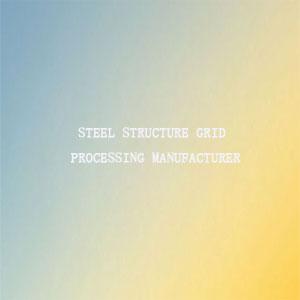There are several ways to connect steel structures
In the field of steel structure engineering, light steel structures, heavy steel structures and grid steel structures have different connection methods due to their different structural characteristics and application scenarios. Among them, rigid connection and hinged connection are two more important connection methods.

Rigid connection is widely used in heavy steel structures. For example, in the steel structure frame system of high-rise buildings, rigid connection is often used between beams and columns. Rigid connection can prevent relative rotation between connected components, and can effectively transmit bending moment, shear force and axial force when bearing load. Its connection structure is relatively complex, generally achieved by welding or high-strength bolt connection with auxiliary components such as stiffening ribs. Taking welded rigid connection as an example, at the connection between beam and column, the flange and web of the beam are fully penetrated and welded to the column respectively, and the appropriate welding groove form, weld size, etc. are set according to the calculation and design requirements. At the same time, stiffening ribs are set at the beam-column node to enhance the stiffness and bearing capacity of the node. This connection method makes the overall stability of the structure high and can adapt to large vertical and horizontal loads, but it has high requirements for construction accuracy and welding technology. The residual stress generated during welding also needs to be properly handled, otherwise it may affect the durability of the structure.
Articulation has its unique application in light steel structures and grid steel structures. In some simple roof truss structures of light steel structures, some nodes are connected by hinges. The characteristics of hinged connections are that they can only transmit shear force and axial force, but not bending moment, and the components can rotate relative to each other around the connection point. For example, in the connection between the roof truss and the top of the column of some light portal frames, hinged supports are used, which are connected by bolts to allow the roof truss to have a certain degree of rotation freedom when the temperature changes or deforms slightly, which can reduce the adverse effects of factors such as temperature stress or uneven foundation settlement on the structure. In the grid steel structure, the bolt ball node connection method can be regarded as a hinged form. The rods are connected to the bolt ball by bolts. The connection between the rods mainly transmits axial force, so that the grid structure can form a stable spatial force system, and it is convenient for factory prefabrication and rapid assembly on site, which improves construction efficiency.
In addition to rigid connection and hinge, there is also a semi-rigid connection method, which is between rigid connection and hinge. To a certain extent, it can transmit bending moment and allow relative rotation between components. It is occasionally used in some light steel structure buildings with low requirements for structural deformation and small loads. The design and calculation of this connection method is relatively complex, and it is necessary to accurately consider the influence of the stiffness characteristics of the connection on the overall structural performance.
In short, in the design and construction of light steel structures, heavy steel structures and grid steel structures, the rational selection of rigid connection, hinge or other connection methods requires comprehensive consideration of the functional requirements of the structure, load characteristics, construction conditions and economy and other factors to ensure the safety, reliability and durability of the steel structure during use.






